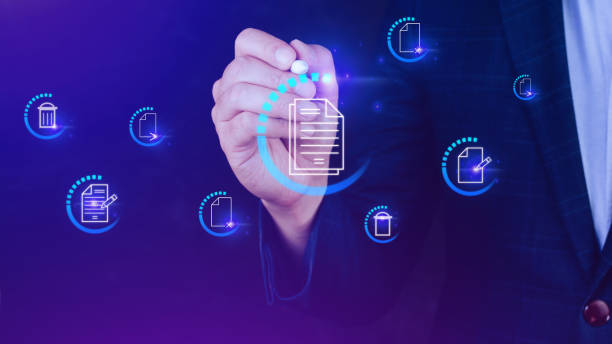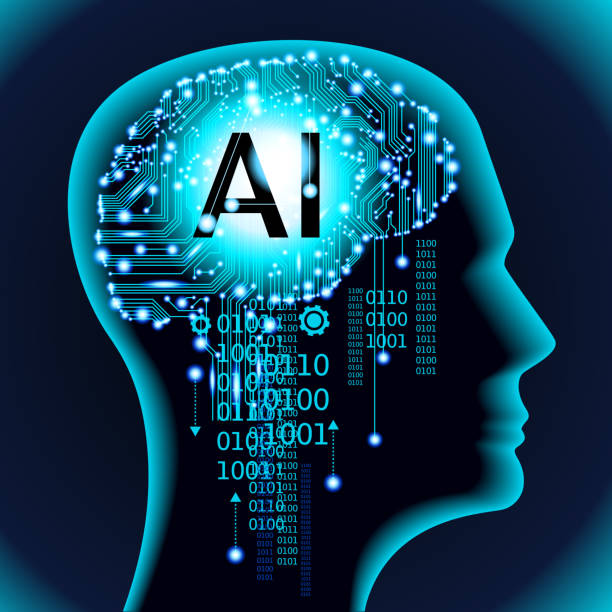What is On-Page SEO and Why Does it Matter?
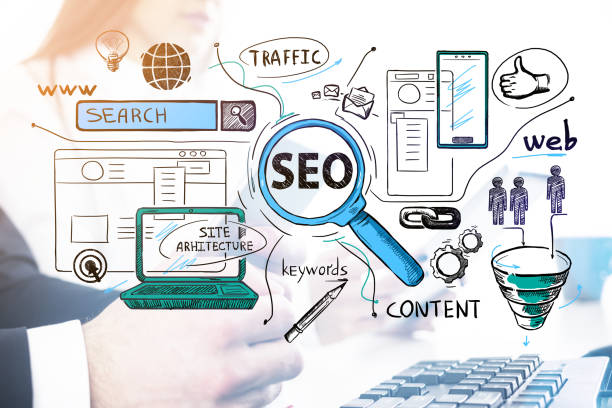
What is On-Page SEO and Why Does it Matter?
On-Page SEO is a collection of techniques and actions performed within your website to improve your site’s ranking in search engines like Google Google.
These actions include optimizing content, site structure, title tags, meta descriptions, and other internal website elements.
The importance of On-Page SEO stems from the fact that search engines pay attention to a web page’s content and how it is presented to understand its topic and quality.
If your website is not optimized for search engines, its visibility in search results will decrease, resulting in less traffic to your site.
On-Page SEO helps you design your website in a way that is both attractive to search engines and provides a good user experience for visitors.
By optimizing On-Page SEO, you can improve your site’s ranking in search results, attract more traffic, and ultimately achieve your business goals.
On-Page SEO is one of the most important aspects of improving SEO SEO in general, and focusing on it will yield very high returns.
On-Page SEO is actually the first step to being seen in the online world.
Are you frustrated with the low conversion rate of your online store?
Rasaweb, with professional e-commerce website design, is your definitive solution!
✅ Increase your sales and revenue
✅ Exceptional user experience for your customers
⚡ Get a free consultation now!
Keyword Research – Finding the Best Search Terms

Keyword Research – Finding the Best Search Terms
Keyword research is the process of finding the phrases that users use to search for information on search engines.
This process is crucial for On-Page SEO because it helps you create content based on the needs and interests of your target audience.
To conduct keyword research, you can use various tools such as Google Keyword Planner Google Keyword Planner, SEMrush SEMrush, and Ahrefs Ahrefs.
These tools show you which keywords have the most searches, how much competition there is for these keywords, and which keywords are related to your topic.
After finding the right keywords, you should use them naturally in your content.
Avoid using too many keywords (Keyword Stuffing), as this can harm your site’s ranking.
Instead, try to create valuable and useful content for users that naturally includes your desired keywords.
Remember that On-Page SEO without proper keyword research is like building a house without a plan.
Keywords are the building blocks of your On-Page SEO.
Optimizing Page Title and Meta Descriptions
![]()
Optimizing Page Title and Meta Descriptions
The Title Tag and Meta Description are two important elements in On-Page SEO that are displayed in search results.
The title tag should briefly and accurately describe the page’s topic and include the main keywords.
The meta description should provide a summary of the page’s content and encourage users to click on your link.
To optimize the title tag, try to keep it between 50 and 60 characters long and use the main keywords at the beginning of the title.
To optimize the meta description, keep it between 150 and 160 characters long and use engaging and persuasive sentences.
Make sure the title tag and meta description are unique for each page and accurately describe the content of that page.
The title and meta description are the first things users see in search results, so optimizing them can greatly impact your click-through rate (CTR). On-Page SEO will be incomplete without paying attention to these two basic elements.
| Element | Description | Best Practices |
|---|---|---|
| Title Tag | The title tag is displayed in search results. | Length between 50-60 characters, includes main keywords, unique |
| Meta Description | The meta description is a summary of the page’s content that is displayed in search results. | Length between 150-160 characters, engaging and persuasive, unique |
Content Optimization – Producing Valuable and Engaging Content

Content Optimization – Producing Valuable and Engaging Content
Content is king! This phrase is very famous in the world of SEO SEO and indicates the high importance of content in attracting audiences and improving site ranking.
To optimize content, you need to produce valuable, useful, and engaging content for your audience.
Your content should answer the questions and needs of your audience and encourage them to spend more time on your site.
Don’t forget to use keywords in your content, but avoid overusing them.
Try to use keywords naturally in your text and combine them with other related words.
In addition, use images, videos, and other multimedia elements to make your content more attractive.
Your content should be readable and understandable and have a proper structure.
Use headings and subheadings to organize your content and use short paragraphs and simple sentences.
On-Page SEO is built on quality content.
Falling behind in competition with large online stores?
Rasaweb, with professional e-commerce website design, brings your business online and increases your market share!
✅ Increase brand credibility and customer trust
✅ Easy shopping experience leads to more sales
⚡ Act now to get a free website design consultation!
URL Structure Optimization

URL Structure Optimization
The URL structure is another important element in On-Page SEO that you should pay attention to.
Your URLs should be short, readable, and relevant to the page content.
Avoid using long and complex URLs that contain meaningless numbers and letters.
Instead, use URLs that include the page’s main keywords and help users and search engines understand the page’s topic.
For example, instead of using a URL like `example.com/page?id=123`, use a URL like `example.com/seo-internal`.
This URL is short, readable, and relevant to the page’s topic, and helps search engines properly index the page.
Also, try to use a hierarchical URL structure to clearly show your site’s structure to search engines.
On-Page SEO requires an organized and logical structure, and a proper URL is part of this structure.
On-Page SEO helps you show your site structure to search engines in an organized manner.
Image Optimization
![]()
Image Optimization
Images play an important role in the attractiveness and user experience of a website.
But if your images are not optimized, they can slow down the site’s loading speed and harm your SEO ranking.
To optimize images, you need to reduce their size, use the appropriate format, and use Alt Text for your images.
Alt Text is text that is displayed instead of the image if it fails to load.
Alt Text should briefly and accurately describe the image’s content and include relevant keywords.
Also, use a proper file name for your images.
Instead of using default file names like `IMG_1234.jpg`, use file names that include the image’s main keywords.
Image optimization is one of the most important aspects of On-Page SEO.
On-Page SEO helps you optimize your site in the best way.
Improving Site Loading Speed
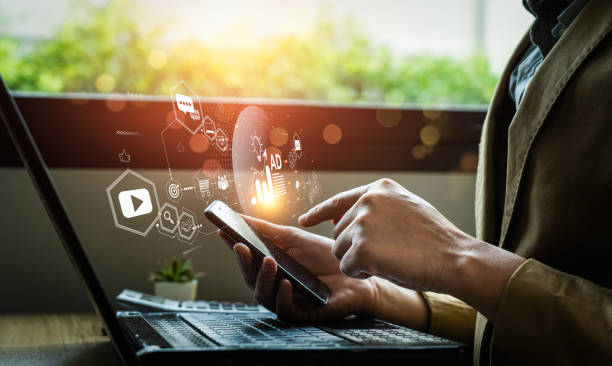
Improving Site Loading Speed
Site loading speed is an important factor in site ranking in search engines.
Internet users expect web pages to load in a few seconds, and if your site is slow, you may lose users.
To improve site loading speed, you can use various techniques such as image optimization, file compression, using Cache, and using a Content Delivery Network (CDN).
You can also use tools like Google PageSpeed Insights Google PageSpeed Insights and GTmetrix GTmetrix to identify speed problems on your site and find appropriate solutions to fix them.
High loading speed not only improves the user experience but also strengthens On-Page SEO.
On-Page SEO helps your site improve its speed.
| Technique | Description | Benefits |
|---|---|---|
| Image Optimization | Reducing image size and using the appropriate format | Reducing page size, increasing loading speed |
| File Compression | Compressing HTML, CSS, and JavaScript files | Reducing page size, increasing loading speed |
| Using Cache | Storing a copy of web pages in the browser’s cache | Increasing loading speed for returning visitors |
| Using a Content Delivery Network (CDN) | Distributing site content on different servers around the world | Increasing loading speed for visitors from different parts of the world |
Using Internal Links

Using Internal Links
Internal links are links that connect different pages of your website.
Using internal links can help improve site structure, increase SEO ranking, and improve user experience.
Internal links help search engines find important pages of your site and give them a higher ranking.
Also, internal links help users easily navigate your site and find the information they need.
When using internal links, try to use appropriate Anchor Text.
Anchor Text should briefly and accurately describe the topic of the page you are linking to and include relevant keywords.
On-Page SEO becomes stronger with internal linking.
Is your current e-commerce website design not delivering the expected sales?
Rasaweb is a specialist in professional e-commerce website design!
✅ An attractive and user-friendly site aimed at increasing sales
✅ High speed and security for an ideal shopping experience⚡ Get a free online store design consultation with Rasaweb!
Mobile Optimization
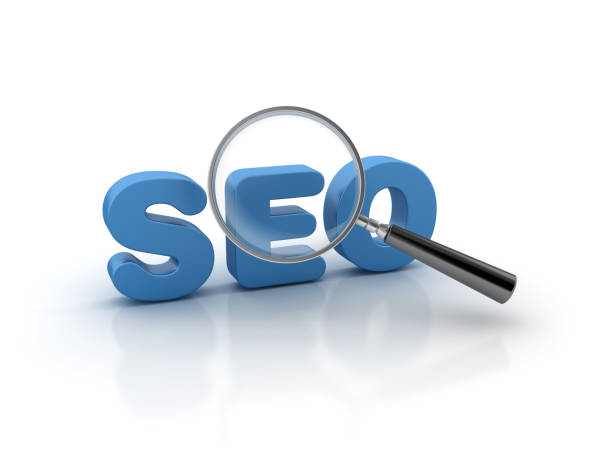
Mobile Optimization
Given the increasing use of mobile devices to search the internet, optimizing your website for mobile is very important.
Your website should be Responsive, meaning it should automatically adapt to the screen size of different devices.
Also, your website should be fast and easy to use on mobile devices.
Google gives a higher ranking to websites that are optimized for mobile.
To optimize your website for mobile, you can use Google’s Mobile-Friendly Test Mobile-Friendly Test.
On-Page SEO is incomplete without mobile optimization and will not have the necessary return. On-Page SEO for mobile is necessary for all websites.
Monitoring and Analyzing Results

Monitoring and Analyzing Results
After taking On-Page SEO measures, you should regularly monitor and analyze your results.
To do this, you can use tools like Google Analytics Google Analytics and Google Search Console Google Search Console.
These tools show you where your site traffic is coming from, what users are doing on your site, and how high your site ranks in search engines.
By analyzing this data, you can identify the strengths and weaknesses of your On-Page SEO and take the necessary measures to improve your results.
On-Page SEO is an ongoing process and requires continuous monitoring and improvement. Monitoring and analyzing On-Page SEO helps you be more successful in the results.
Frequently Asked Questions
| Question | Answer |
|---|---|
| What is a Meta Title and why is it important in On-Page SEO? | The meta title is the most important element of On-Page SEO that is displayed at the top of the browser tab and search results. This title helps search engines and users understand the main topic of the page and should include the main keyword. |
| What role does a Meta Description play in On-Page SEO? | The meta description is a short summary of the page content that is displayed under the title in search results. Although it does not directly affect ranking, its attractiveness can increase click-through rate (CTR). |
| How should keywords be used in page content? | Keywords should be used naturally and relevantly in strategic locations such as the title, headings, first paragraph, and body text. Avoid overusing keywords (Keyword Stuffing). |
| What is the importance of quality and comprehensive content in On-Page SEO? | Quality, unique, informative, and comprehensive content that meets the user’s needs is highly important. Search engines give a higher ranking to content that creates real value. |
| What is the application of Heading Tags (H1-H6) in the structure of On-Page SEO? | Heading tags (H1, H2, H3, etc.) are used to structure content and specify the importance of different sections. H1 is the main title of the page and each page should have only one H1. Other tags are used for subheadings. |
| How should images be optimized to improve On-Page SEO? | To optimize images, use descriptive Alt Text that includes relevant keywords, reduce the image file size without losing quality, and use meaningful and relevant file names. |
| What are the characteristics of a SEO-friendly URL for On-Page SEO? | A SEO-friendly URL should be short, readable, descriptive, include the main keywords, and be without extra characters. The URL structure should be hierarchical and logical so that it is understandable for both users and search engines. |
| How does Internal Linking help On-Page SEO? | Internal linking helps users and search engine crawlers better understand the site structure, transfer page credibility, and increase the time the user spends on the site by connecting related pages to each other. |
| What is the impact of page loading speed on On-Page SEO? | High loading speed is critical for both user experience and SEO ranking. Slower pages may be ignored by search engines and lead to an increase in the Bounce Rate. |
| Why is Mobile-Friendliness so important in On-Page SEO? | Given the increasing number of searches via mobile devices, having a responsive and mobile-friendly site is essential for user experience and ranking in search results (Google’s Mobile-First Indexing). |
And other services of Rasa Web advertising agency in the field of advertising
Smart Customer Journey Map: Designed for businesses looking to increase click-through rates through Google Ads management.
Smart Content Strategy: A new service to increase SEO ranking improvement through the use of real data.
Smart Sales Automation: A new service to increase site visits through marketing automation.
Smart Customer Journey Map: Transform sales with precise audience targeting.
Smart Digital Advertising: An effective tool to increase sales by optimizing key pages.
And hundreds of other services in the field of internet advertising, advertising consulting and organizational solutions
Internet Advertising | Advertising Strategy | Advertorial
Sources
Zoomit – On-Page SEO: A Comprehensive Guide to Optimizing Web Pages
,Chetor – What is On-Page SEO?
,Aryanik – What is On-Page SEO?
,Faradars – What is On-Page SEO?
? To promote your business in the digital world, Rasaweb Afrin Digital Marketing Agency with expertise in SEO, online advertising and custom website design, is your trusted partner.
📍 Tehran, Mirdamad Street, next to the Central Bank, South Kazerun Alley, Ramin Alley No. 6

